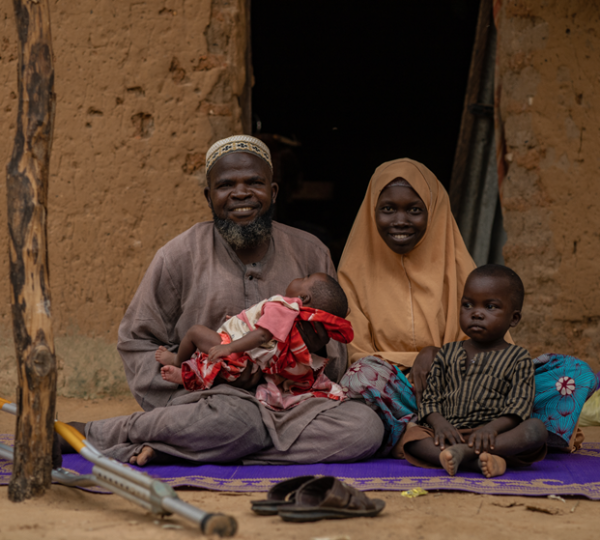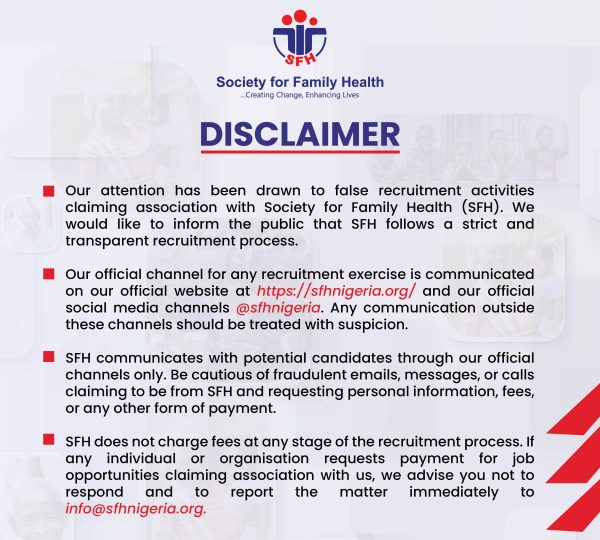Time to put the spotlight on the hidden HIV/AIDS epidemic in IDUs in sub-Saharan Africa- Dr Jennifer Anyanti

When people think of the HIV/AIDS epidemic in Africa, often the image is one of a generalised heterosexual epidemic. Yet, whilst injecting drug use has long been acknowledged as a driving factor in the epidemics in eastern Europe and central Asia, there is an increasing awareness of the rise of the problem in sub-Saharan Africa. And this is certainly the case in Nigeria, Africa’s most populous country and one that has been hard hit by the disease, with the second highest burden of HIV/AIDS worldwide. Nigeria has been hard hit by the HIV epidemic, with an adult HIV prevalence of around 3.6% – some 3.9 million Nigerians and 220,000 children under the age of 15 years are living with HIV and an estimated 2.5 million children have been orphaned by the disease.
Injecting drug use is now recognised as a risk factor for HIV infection in at least 16 countries in sub-Saharan Africa and five countries in north Africa. Although Europe remains the largest market for Afghan opium, a substantial portion of opioid exports remain behind at transit locations in sub-Saharan Africa, fuelling local consumption markets. Heroin use now occurs in most large towns in Kenya and Tanzania, and is reported to be on the increase in Cote d’Ivoire, Kenya, Mauritius, South Africa, Ghana, Democratic Republic of Congo, Guinea Bissau, and Nigeria. But getting hold of comprehensive data on the magnitude of injecting drug use is difficult – data are only available from a third of countries in sub-Saharan Africa.
Nigeria was one of the first African countries to estimate HIV prevalence among injecting drug users (IDUs) in 2000 – at that time HIV prevalence among IDUs was 11%. A recent study led by the Federal Ministry of Health in Nigeria with technical and financial support from the Enhancing Nigeria’s Response to HIV (ENR) consortium partners Society for Family Health and Population Council clearly shows the higher burden of HIV among IDUs across the country, This burden is classified as a concentrated epidemic in three of the six states where the study was conducted. The ENR programme supports the Federal and State governments of Nigeria to characterise the epidemic within the country and in high prevalence states, through specialised studies such as the Integrated Bio-Behavioural Surveillance Survey (IBBSS), a study that interviews over 20,000 individuals in high-risk groups in Nigeria such as female sex workers and IDUs. The programme also assists the governments and civil society partners to develop evidence-informed programmes based on data collected within the states from surveys, census data, and mapping studies.
As is so often the case, women bear the brunt. HIV prevalence for female IDUs was five to 15 times higher than for male IDUs in most of the states that were surveyed. This not only reflects women’s dual exposure through both needle sharing and unprotected sex (and the overlap between sex work to pay for their drug use and other pressing survival needs), but the high-risk practice of “flashblood” – the deliberate sharing of a syringe full of blood passed from someone who has just injected heroin to someone else who injects it in lieu of heroin. It is a practice often used by women who cannot afford to purchase heroin.
There are well-documented effective harm reduction interventions to help tackle the spread of the epidemic in these populations, including needle-exchange programmes, opioid substitution therapy, and counselling. But in a global review of 148 countries, coverage of needle and syringe programmes, substitution therapy, and antiretroviral treatment among IDUs was lowest in sub-Saharan Africa. In Nigeria, very few groups are implementing HIV prevention programmes for IDUs: national prevention messages in mass media and at health facilities are a “one-size-fits-all” approach, focused on sexual risk behaviours. They stand very little chance of reaching IDUs who are a hidden and stigmatised population – and female IDUs doubly so.
It is clear that if we are to meet the goals of the World AIDS Day theme – Getting to Zero – there must be concerted efforts to improve the available data on IDUs in countries and across the region as a whole; monitoring and research among this population must be intensified; and policy and programmatic interventions must be bolstered to address the very specific challenges the problems are posing in sub-Saharan Africa. Only then will we be able to most effectively guide resource allocation for HIV prevention and treatment and deliver the programmes that stand the best chance of tackling the injection drug use that is helping to drive the HIV/AIDS epidemic in Africa.
This is a joint post with George Eluwa, Deputy Director, Operations Research at the Population Council Nigeria.





